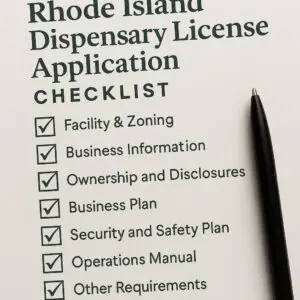 Every cannabis entrepreneur eventually faces the reality that the enterprise you built will change hands. Whether you plan to sell to a strategic buyer, transition ownership to management, or create an employee‑owned legacy, a thoughtful Business Exit Strategy is as essential as a good cultivation plan. Selling a cannabis business isn’t like unloading an end table on Craigslist – you’re dealing with a federally illicit product under intense state scrutiny and a tax code that refuses to treat you like any other business. Unlike tech startups, cannabis operators must navigate Internal Revenue Code § 280E, state license transfer restrictions, banking challenges and reputational risk. A prudent exit strategy protects your wealth, your employees and your family’s legacy while maximizing the value you’ve created.
Every cannabis entrepreneur eventually faces the reality that the enterprise you built will change hands. Whether you plan to sell to a strategic buyer, transition ownership to management, or create an employee‑owned legacy, a thoughtful Business Exit Strategy is as essential as a good cultivation plan. Selling a cannabis business isn’t like unloading an end table on Craigslist – you’re dealing with a federally illicit product under intense state scrutiny and a tax code that refuses to treat you like any other business. Unlike tech startups, cannabis operators must navigate Internal Revenue Code § 280E, state license transfer restrictions, banking challenges and reputational risk. A prudent exit strategy protects your wealth, your employees and your family’s legacy while maximizing the value you’ve created.
This article provides a five‑year roadmap for planning your exit. Drawing from financial‑planning literature, cannabis‑specific legal analysis, and the most current insights on employee stock ownership plans (ESOPs), we outline steps to structure your business for sale, clean up your books, assemble the right team, and select the best exit path. Throughout, we highlight pitfalls unique to cannabis businesses, such as state residency requirements, change‑of‑control prohibitions, and § 280E tax traps.
Year 5: Define Your Exit Vision
Choose Internal vs. External Succession
The first stage is purely strategic: decide how you want to leave. Kiplinger’s five‑year exit timeline urges business owners to begin by picking between an internal succession and an external sale. Internal successions include gifting or selling to your children, transferring ownership to trusted managers through a management buyout, or adopting an ESOP structure. External exits include selling to strategic or financial buyers or taking the company public.
For cannabis operators, internal transfers can be challenging because state regulators often require all new owners to pass background checks and residency requirements. Some jurisdictions – such as Maryland until April 2025 – impose a five‑year holding period before any sale or transfer of a cannabis license. New legislation is loosening some restrictions, but the process remains slow and costly. External sales may provide a larger payout but require more due diligence and regulatory approvals; you’ll need to vet buyers for “fit and proper person” standards and demonstrate continuing compliance during the sale process.
Assess Your Wealth Gap
Another early consideration is your personal wealth gap – the difference between what you have and what you need to retire comfortably. Kiplinger notes that if your company must fill a large wealth gap, an external sale may be necessary to obtain enough liquidity. If you have accumulated sufficient personal assets, you may have the flexibility to pursue an internal transfer that prioritizes legacy over price.
Decide What Legacy Means
The cannabis industry remains community‑driven. Many founders view their business as a vehicle for social equity and community development. Do you want to ensure that employees retain jobs and wealth through an ESOP? Or is the highest price your priority? Clarifying your non‑financial goals will inform the rest of your planning.
Year 4: Get Organized and Valued
Clean Up the Books
Buyers and regulators will scrutinize your financial statements. Kiplinger warns that gaps between promised numbers and your books are one of the most common reasons deals collapse. Cannabis companies often operate on cash bases, keep messy ledgers, or commingle personal expenses – practices that complicate due diligence. Hire a seasoned bookkeeper and accountant to prepare GAAP‑compliant statements and maintain them for at least three years. Make sure taxes are filed properly and that you have substantiation for all deductions permitted under § 280E (e.g., cost of goods sold). If you operate in multiple states, maintain separate ledgers for each license to simplify regulatory review.
Obtain a Professional Valuation
You cannot maximize value without knowing what your business is worth. MasterClass’s guide to exit strategies urges entrepreneurs to obtain a business valuation early and to revisit it periodically. Engage valuation experts who understand cannabis market multiples, discount rates for regulatory risk, and intangible assets such as brand equity. They should also understand how § 280E depresses after‑tax earnings and thus affects valuations. Documenting your valuation helps justify your asking price and defend against IRS challenges in a later audit.
Resolve Corporate Structure Issues
Is your entity an LLC taxed as a partnership? Are you considering converting to a C‑corporation to attract institutional capital? Cannabis deals often involve complex entity structures due to residency requirements, management companies, and real‑estate holding companies. Work with counsel to simplify your corporate chart, clarify ownership percentages, and confirm that your operating agreement or bylaws allow for buy‑sell provisions and drag‑along rights. Ensure your licensing entity remains wholly compliant so that regulatory agencies will approve a change of control.
Year 3: Assemble Your “Deal Team”
Bring in Advisors Early
Kiplinger’s timeline advises owners to build a team of professionals two years before engaging a broker, but cannabis deals often require even more lead time. The complexity of cannabis law means you should assemble your team three years out to avoid delays when regulators ask for documentation. Your team should include:
-
Corporate attorney and cannabis regulatory counsel. They will navigate entity restructuring, license transfer rules, and draft the sale documents. Choose lawyers who have closed cannabis transactions in your jurisdiction.
-
Certified public accountant with cannabis expertise. They will prepare reviewed or audited financial statements, model tax scenarios, and help plan around § 280E.
-
M&A broker or investment banker. Cannabis M&A requires specialized brokers who know buyers willing to pay for licenses, real estate and brand equity. Some states restrict brokers’ ability to take commissions, so check local rules.
-
Wealth manager or financial planner. They will help you understand your wealth gap and craft a post‑sale investment plan.
Evaluate Exit Options
Apart from a straight sale, you should evaluate alternative exit structures suitable to cannabis businesses:
-
ESOP (Employee Stock Ownership Plan). NatLawReview explains that ESOPs can eliminate not just § 280E taxes but almost all federal and state income taxes. In an ESOP transaction, the owners sell their shares to an ESOP trust and defer capital gains tax. Tax savings generated by ESOP status can finance the purchase price, which is critical given the lack of traditional financing for cannabis businesses. ESOPs thus allow owners to cash out while preserving jobs and giving employees a stake in the company. Cannabis Industry Insights notes that ESOPs are feasible for companies with around $5–$10 million in revenue and 15–20 employees.. They generally take four to six months to complete and involve costs for lawyers, valuation experts and trustees.
-
Management buyouts. Selling to your management team can provide continuity, but managers must secure financing. Because cannabis assets are typically not bank‑financeable, management buyouts often rely on seller financing or private lenders with high interest rates.
-
Strategic or financial sale. Selling to a multi‑state operator (MSO) or private equity fund may generate a larger payout. However, a sale to a competitor may require anti‑trust review and will almost certainly demand extensive due diligence. The buyer will scrutinize your compliance history, leases, product liability exposure, and licensing. Build your data room early.
-
Initial public offering (IPO). MasterClass notes that an IPO is an exit strategy for companies seeking to expand and attract new investors. In U.S. cannabis, IPOs are not yet available because the New York Stock Exchange and Nasdaq will not list companies that violate federal law. Canadian exchanges or reverse takeovers may be alternatives for U.S. operators, but they impose ongoing disclosure obligations.
-
Liquidation. As a last resort, a cannabis company may liquidate, selling assets and licenses (subject to regulatory approval) and settling debts. This may be advisable if licenses cannot be transferred or if market conditions deteriorate.
Year 2: Enhance the Business for Sale
Optimize Operations and Compliance
Buyers pay for clean operations, compliant practices and scalable systems. Use the second year to streamline processes, reduce costs and enhance revenue. Implement robust point‑of‑sale systems with track‑and‑trace integration, and maintain standard operating procedures for cultivation and manufacturing. Ensure your cannabis inventory counts reconcile with state seed‑to‑sale systems, and correct any previous discrepancies.
Regulators often require businesses to cure compliance violations before approving transfers. Address any outstanding warning letters or audits. Renew all licenses, permits, and local approvals, and confirm that your premises are up to code. If you operate in multiple states, harmonize policies across facilities to reduce buyer training costs.
Address Real Estate and Leases
Many cannabis companies lease their cultivation and retail properties. Review lease terms for assignability and change‑of‑control clauses; some landlords require consent before a sale. Negotiating assignment rights now prevents hold‑ups later. Consider purchasing real estate to make your company more attractive to buyers, or splitting real estate into separate entities to give buyers flexibility.
Develop Bench Strength
Buyers prefer businesses that can operate without the founder. Build a management team that can run day‑to‑day operations and maintain relationships with regulators. Document roles, responsibilities and training programs. Transparent human resources policies reduce employee turnover and signal stability to buyers.
Consider Tax‑Efficient Structures
If you lean toward an ESOP exit, begin conversations with ESOP advisors now. Cannabis Industry Insights suggests that ESOPs are practical for mid‑sized companies and provide tax‑free retirement benefits to employees. Evaluate whether you meet revenue and employee thresholds. Implementing an ESOP may also require adjusting your corporate structure to ensure compliance with ERISA and state cannabis laws.
Year 1: Execute the Transaction
Engage a Broker or Investment Bank
One year out, Kiplinger advises engaging an M&A adviser or investment bank to prepare pitch materials, run a competitive process and negotiate letters of intent. For cannabis transactions, choose firms with experience in the sector; they understand how to value licenses, brand equity and real estate, and they maintain networks of qualified buyers. Expect the broker to sign confidentiality agreements and assist with due diligence.
Prepare the Data Room
You should have been building your data room for years, but now it must be comprehensive. Include:
-
Three years of GAAP‑compliant financial statements and tax returns.
-
List of licenses and approvals, with copies of permits, inspection reports and renewal history.
-
Organizational documents, capitalization table and minutes of manager/shareholder meetings.
-
Key contracts, including supply agreements, leases, intellectual property licenses, vendor contracts and employment agreements.
-
Compliance records, including seed‑to‑sale reports, audit responses and any regulatory correspondence.
-
Records of litigation or claims, such as product liability suits or labor disputes.
Negotiate and Close
After receiving letters of intent, select your preferred buyer and begin exclusive negotiations. External buyers will likely require state and local regulatory approval prior to closing, which can take three to six months. During this period, maintain operations and avoid major changes that could jeopardize approval. If you are pursuing an ESOP, work with your trustee to finalize purchase documents, financing arrangements, and regulatory approvals. Cannabis Industry Insights notes that ESOP transactions typically take four to six months to complete.
Plan Your Transition
A successful exit rarely ends on closing day. Many external sales involve an earnout or transition period. Kiplinger stresses that sellers should expect to stay involved for a period, especially in service businesses. In cannabis, regulators may require you to remain on the license until the buyer qualifies, and buyers often need your expertise to navigate local politics. Negotiate your post‑closing role, compensation and timeline upfront. If you adopt an ESOP, decide whether you will remain as CEO, join the board, or transition out entirely.
Special Considerations for Cannabis Entrepreneurs’ Business Exit Strategy
Navigating § 280E and Tax Strategy
Section 280E of the Internal Revenue Code disallows deductions for ordinary business expenses incurred in trafficking controlled substances. Cannabis ESOPs present perhaps the only lawful way to eliminate § 280E’s impact. By converting to an ESOP, your company becomes tax‑exempt, enabling you to reinvest money that would otherwise go to the IRS into expansion or to finance your own buyout. However, ESOPs are not suitable for every company; the transaction costs and administrative complexity mean they are best for companies with at least $5–$10 million in revenue and 15–20 employees.
License Transfer Restrictions
State cannabis laws often restrict the transfer of licenses. Maryland’s five‑year hold requirement, for example, prevented most sales until a 2025 law created an ESOP exception. Many states require prospective buyers to apply for ownership pre‑approval, which can take months. Some markets (e.g., Illinois social equity licenses) prohibit transfers altogether for a period. Your exit plan must account for these restrictions and include contingency strategies if regulators decline your preferred buyer.
Social Equity and Community Impact
Exiting a cannabis business doesn’t absolve you of your responsibility to the communities you serve. Consider how your sale might affect employees, customers and local stakeholders. If legacy and social equity matter to you, an ESOP or management buyout may better align with your values than selling to a multi‑state operator. In an ESOP, employees receive a beneficial interest in the company, which can increase productivity and retention. Management buyouts keep control with people who know and care about the community.
Family and Estate Planning
Your exit strategy intersects with your estate plan and family legacy. Will you transfer ownership to children or relatives? If so, consult estate planning counsel to ensure compliance with tax laws and to shield the business from probate. Because cannabis businesses remain federally illegal, some trusts and estate planning tools may not be available or may require extra caution. A comprehensive plan protects your family’s wealth while avoiding unintended consequences like triggering gift taxes or jeopardizing social equity status.
Conclusion
Exiting a cannabis business is complex, but the complexity is manageable with time and proper planning. Starting five years out allows you to define your goals, organize your financials, assemble a knowledgeable team, and choose the exit path that aligns with both your profit objectives and your personal values. By year two, optimize operations and align your company for sale; by year one, you’ll be ready to negotiate and close on your terms. Whether you choose an ESOP to avoid § 280E, a strategic sale to an MSO, or a management buyout, being prepared ensures you capture the value you’ve created and leave a legacy that reflects your commitment to community, compliance and family.




